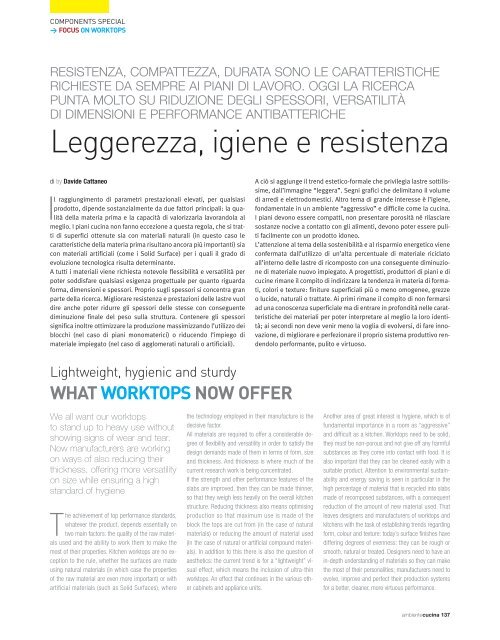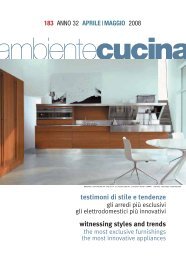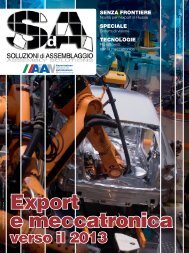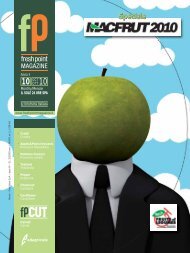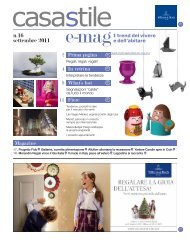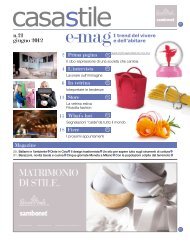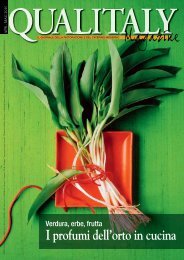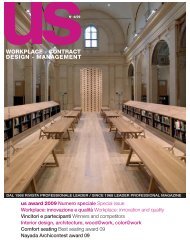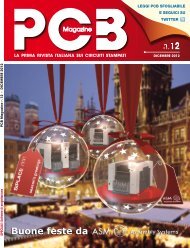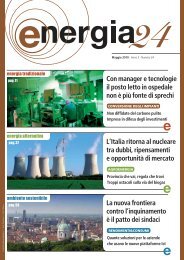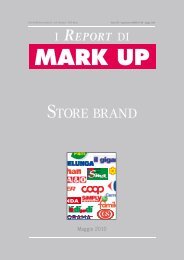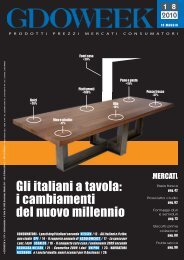super laminato - B2B24 - Il Sole 24 Ore
super laminato - B2B24 - Il Sole 24 Ore
super laminato - B2B24 - Il Sole 24 Ore
You also want an ePaper? Increase the reach of your titles
YUMPU automatically turns print PDFs into web optimized ePapers that Google loves.
COMPONENTS SPECIAL<br />
> FOCUS ON WORKTOPS<br />
RESISTENZA, COMPATTEZZA, DURATA SONO LE CARATTERISTICHE<br />
RICHIESTE DA SEMPRE AI PIANI DI LAVORO. OGGI LA RICERCA<br />
PUNTA MOLTO SU RIDUZIONE DEGLI SPESSORI, VERSATILITÀ<br />
DI DIMENSIONI E PERFORMANCE ANTIBATTERICHE<br />
Leggerezza, igiene e resistenza<br />
di by Davide Cattaneo<br />
<strong>Il</strong> raggiungimento di parametri prestazionali elevati, per qualsiasi<br />
prodotto, dipende sostanzialmente da due fattori principali: la qualità<br />
della materia prima e la capacità di valorizzarla lavorandola al<br />
meglio. I piani cucina non fanno eccezione a questa regola, che si tratti<br />
di <strong>super</strong>fici ottenute sia con materiali naturali (in questo caso le<br />
caratteristiche della materia prima risultano ancora più importanti) sia<br />
con materiali artificiali (come i Solid Surface) per i quali il grado di<br />
evoluzione tecnologica risulta determinante.<br />
A tutti i materiali viene richiesta notevole flessibilità e versatilità per<br />
poter soddisfare qualsiasi esigenza progettuale per quanto riguarda<br />
forma, dimensioni e spessori. Proprio sugli spessori si concentra gran<br />
parte della ricerca. Migliorare resistenza e prestazioni delle lastre vuol<br />
dire anche poter ridurre gli spessori delle stesse con conseguente<br />
diminuzione finale del peso sulla struttura. Contenere gli spessori<br />
significa inoltre ottimizzare la produzione massimizzando l’utilizzo dei<br />
blocchi (nel caso di piani monomaterici) o riducendo l’impiego di<br />
materiale impiegato (nel caso di agglomerati naturali o artificiali).<br />
Lightweight, hygienic and sturdy<br />
WHAT WORKTOPS NOW OFFER<br />
We all want our worktops<br />
to stand up to heavy use without<br />
showing signs of wear and tear.<br />
Now manufacturers are working<br />
on ways of also reducing their<br />
thickness, offering more versatility<br />
on size while ensuring a high<br />
standard of hygiene<br />
The achievement of top performance standards,<br />
whatever the product, depends essentially on<br />
two main factors: the quality of the raw materials<br />
used and the ability to work them to make the<br />
most of their properties. Kitchen worktops are no exception<br />
to the rule, whether the surfaces are made<br />
using natural materials (in which case the properties<br />
of the raw material are even more important) or with<br />
artificial materials (such as Solid Surfaces), where<br />
the technology employed in their manufacture is the<br />
decisive factor.<br />
All materials are required to offer a considerable degree<br />
of flexibility and versatility in order to satisfy the<br />
design demands made of them in terms of form, size<br />
and thickness. And thickness is where much of the<br />
current research work is being concentrated.<br />
If the strength and other performance features of the<br />
slabs are improved, then they can be made thinner,<br />
so that they weigh less heavily on the overall kitchen<br />
structure. Reducing thickness also means optimising<br />
production so that maximum use is made of the<br />
block the tops are cut from (in the case of natural<br />
materials) or reducing the amount of material used<br />
(in the case of natural or artificial compound materials).<br />
In addition to this there is also the question of<br />
aesthetics: the current trend is for a “lightweight” visual<br />
effect, which means the inclusion of ultra-thin<br />
worktops. An effect that continues in the various other<br />
cabinets and appliance units.<br />
A ciò si aggiunge il trend estetico-formale che privilegia lastre sottilissime,<br />
dall’immagine “leggera”. Segni grafici che delimitano il volume<br />
di arredi e elettrodomestici. Altro tema di grande interesse è l’igiene,<br />
fondamentale in un ambiente “aggressivo” e difficile come la cucina.<br />
I piani devono essere compatti, non presentare porosità né rilasciare<br />
sostanze nocive a contatto con gli alimenti, devono poter essere puliti<br />
facilmente con un prodotto idoneo.<br />
L’attenzione al tema della sostenibilità e al risparmio energetico viene<br />
confermata dall’utilizzo di un’alta percentuale di materiale riciclato<br />
all’interno delle lastre di ricomposto con una conseguente diminuzione<br />
di materiale nuovo impiegato. A progettisti, produttori di piani e di<br />
cucine rimane il compito di indirizzare la tendenza in materia di formati,<br />
colori e texture: finiture <strong>super</strong>ficiali più o meno omogenee, grezze<br />
o lucide, naturali o trattate. Ai primi rimane il compito di non fermarsi<br />
ad una conoscenza <strong>super</strong>ficiale ma di entrare in profondità nelle caratteristiche<br />
dei materiali per poter interpretare al meglio la loro identità;<br />
ai secondi non deve venir meno la voglia di evolversi, di fare innovazione,<br />
di migliorare e perfezionare il proprio sistema produttivo rendendolo<br />
performante, pulito e virtuoso.<br />
Another area of great interest is hygiene, which is of<br />
fundamental importance in a room as “aggressive”<br />
and difficult as a kitchen. Worktops need to be solid,<br />
they must be non-porous and not give off any harmful<br />
substances as they come into contact with food. It is<br />
also important that they can be cleaned easily with a<br />
suitable product. Attention to environmental sustainability<br />
and energy saving is seen in particular in the<br />
high percentage of material that is recycled into slabs<br />
made of recomposed substances, with a consequent<br />
reduction of the amount of new material used. That<br />
leaves designers and manufacturers of worktops and<br />
kitchens with the task of establishing trends regarding<br />
form, colour and texture: today’s surface finishes have<br />
differing degrees of evenness: they can be rough or<br />
smooth, natural or treated. Designers need to have an<br />
in-depth understanding of materials so they can make<br />
the most of their personalities; manufacturers need to<br />
evolve, improve and perfect their production systems<br />
for a better, cleaner, more virtuous performance.<br />
ambientecucina 137


